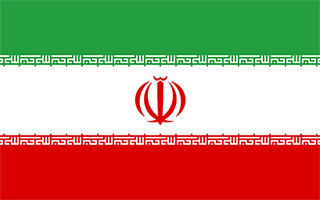Facts and Data
Webpages:
Official Unesco Page
View photos from OUR PLACE the World Heritage collection
Persepolis and Ancient Iran (Catalog of Exhibition Photographs, Oriental Institute, Univ. of Chicago)
Basis Data:
Unesco World heritage since: 1979
Size of heritage: 13 ha
Coordinates:
Longitude: 52,890°
Latitude: 29,934°
Summary
Founded by Darius I in 518 B.C., Persepolis was the capital of the Achaemenid Empire. It was built on an immense half-artificial, half-natural terrace, where the king of kings created an impressive palace complex inspired by Mesopotamian models. The importance and quality of the monumental ruins make it a unique archaeological site.
Location on Map
Show bigger map on Openstreetmap
Persepolis: A Glimpse into Ancient Persian Grandeur
Persepolis, located in the Fars province of Iran, is a UNESCO World Heritage site that stands as a testament to the grandeur and sophistication of the ancient Persian civilization. This archaeological marvel, also known as Takht-e Jamshid, was once the ceremonial capital of the mighty Achaemenid Empire, which ruled over a vast territory from 550 to 330 BCE.
Persepolis was founded by Darius the Great, the third king of the Achaemenid dynasty, around 518 BCE. The construction of this magnificent city took over 150 years and involved the labor of thousands of skilled craftsmen and workers. The site was strategically chosen to showcase the empire's power and wealth, as it was situated on a terrace overlooking the plains of Marvdasht.
The city's architecture is a fusion of various artistic styles, reflecting the diverse influences of the Achaemenid Empire. The most prominent structures in Persepolis are the grand staircases, the Apadana Palace, the Throne Hall, and the Treasury. These buildings were adorned with intricate carvings, depicting scenes of royal ceremonies, battles, and offerings to the gods.
Persepolis served as the ceremonial center of the empire, where kings received foreign delegations, celebrated Nowruz (the Persian New Year), and held lavish festivals. The city became a symbol of Persian power and was visited by ambassadors and dignitaries from all corners of the empire.
However, Persepolis met its tragic fate in 330 BCE when it was looted and set ablaze by Alexander the Great and his troops. The city was left in ruins, buried under layers of sand and debris for centuries. It was not until the 1930s that extensive excavations began, led by renowned archaeologist Ernst Herzfeld.
Today, Persepolis stands as a remarkable archaeological site, offering visitors a glimpse into the opulence and sophistication of ancient Persia. The ruins, though incomplete, still bear witness to the city's former glory. The grand staircases, with their colossal stone reliefs, provide a vivid portrayal of the empire's military might and cultural achievements.
The Apadana Palace, with its iconic columns and intricate carvings, is a testament to the empire's architectural prowess. The Throne Hall, where the king received his subjects, still exudes an aura of regality and power. The Treasury, though empty, hints at the immense wealth that once flowed through the empire.
Persepolis continues to captivate visitors from around the world, offering a unique opportunity to delve into the rich history of ancient Persia. The site's inclusion on the UNESCO World Heritage list ensures its preservation for future generations, allowing them to marvel at the grandeur and legacy of the Achaemenid Empire.
Visiting Persepolis is not only a journey through time but also a chance to appreciate the remarkable achievements of one of the world's greatest civilizations. As the sun sets over the ancient ruins, one cannot help but be awestruck by the enduring legacy of Persepolis.
Videos from the area
Videos provided by Youtube are under the copyright of their owners.






